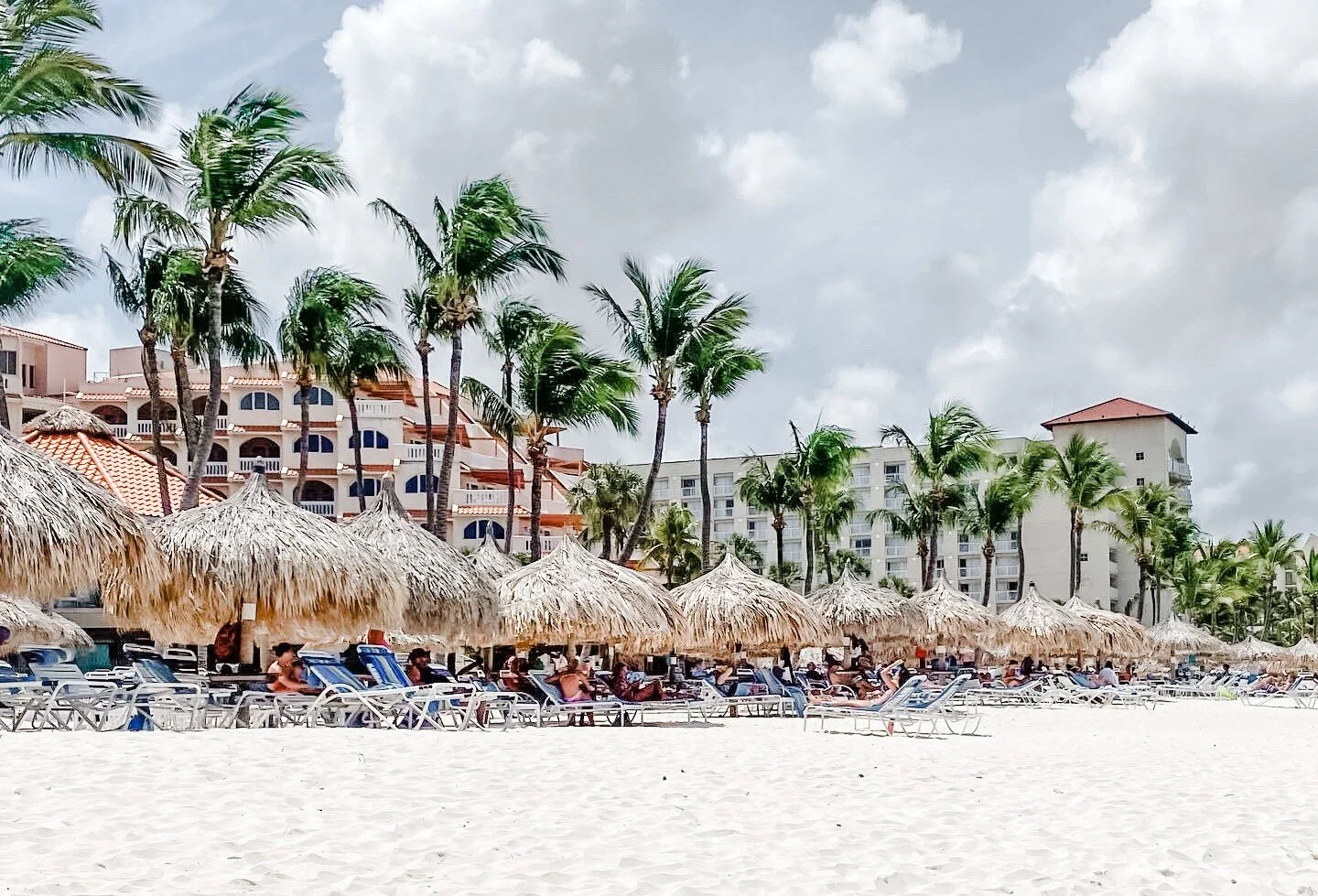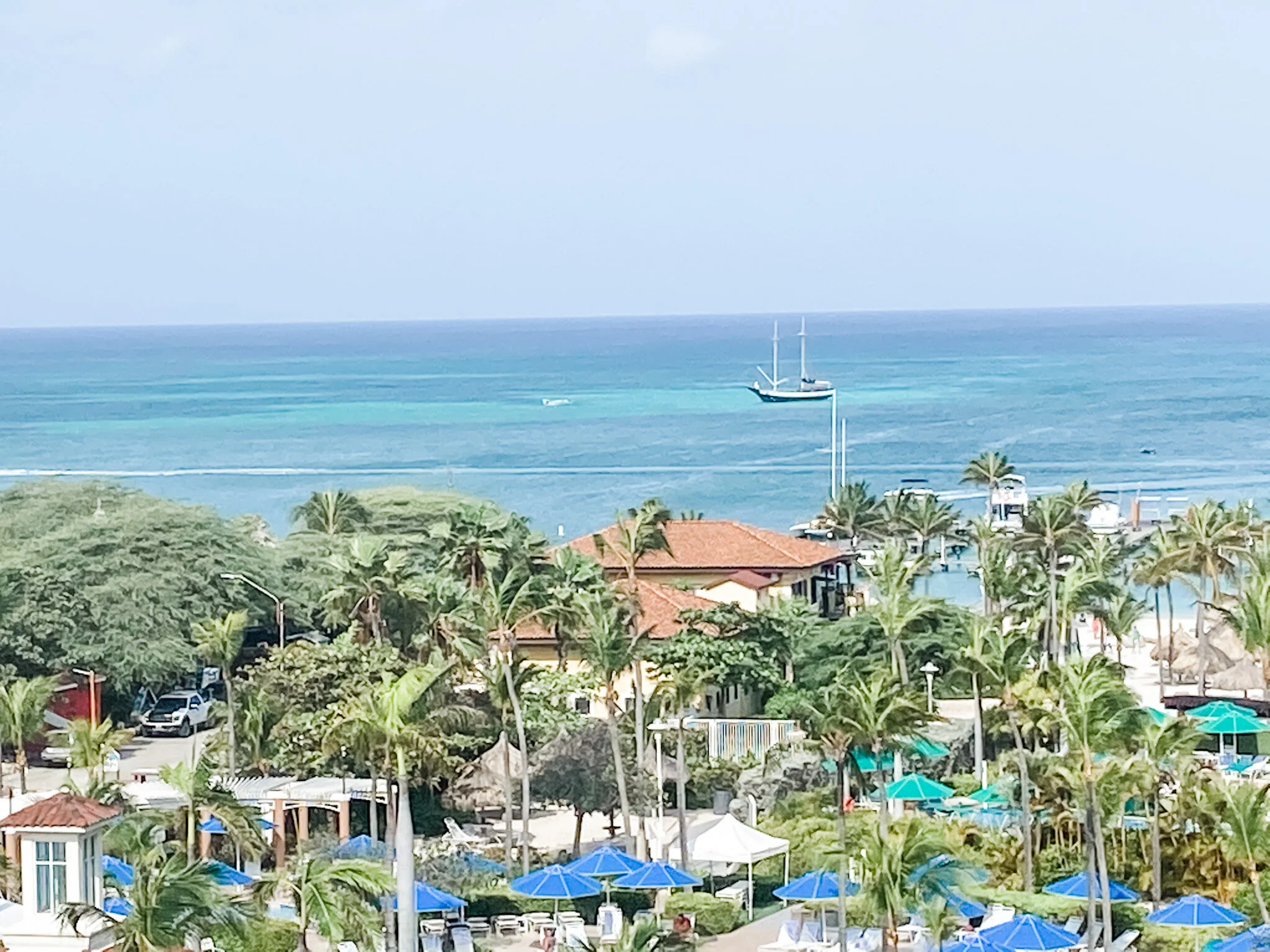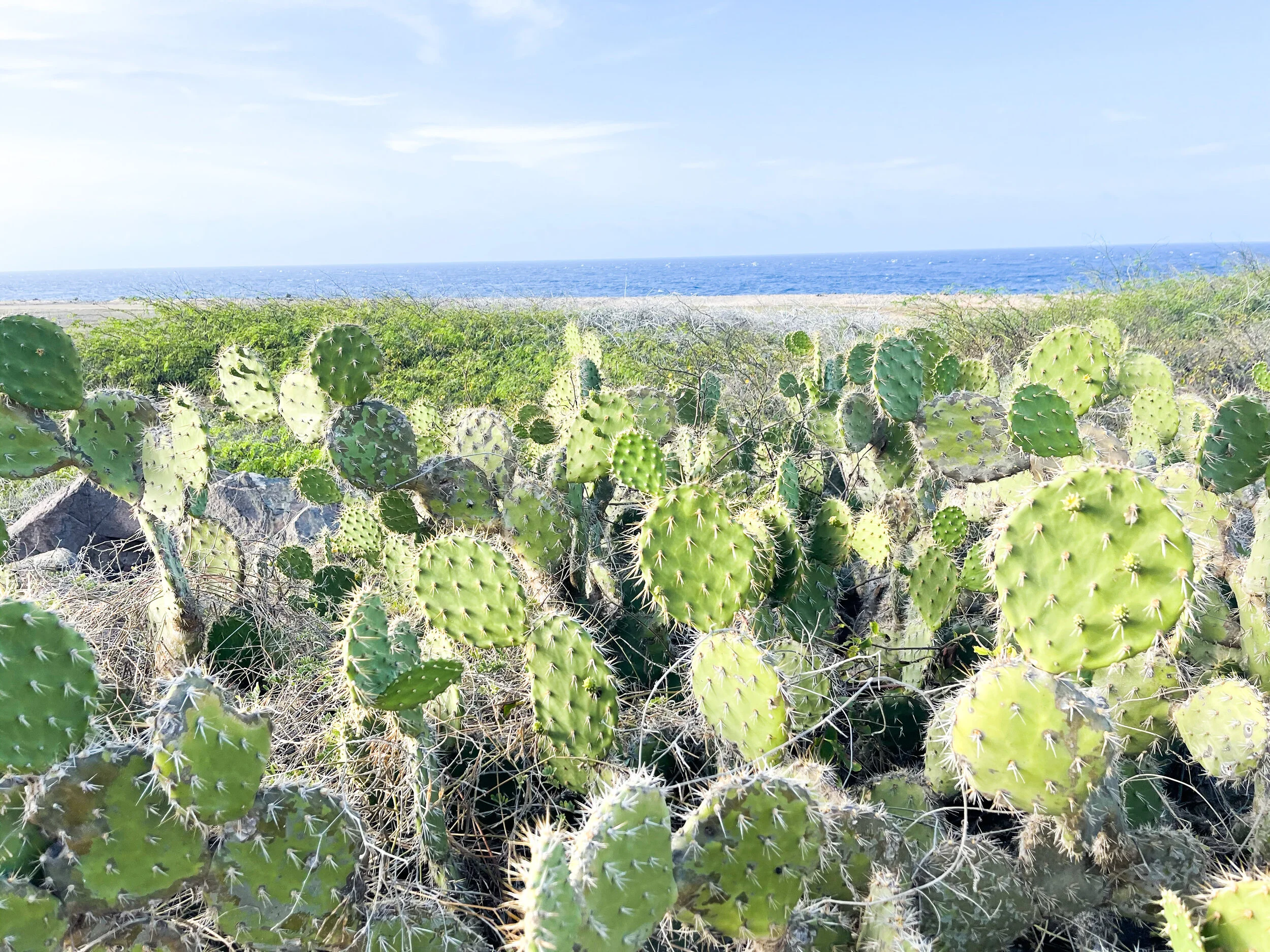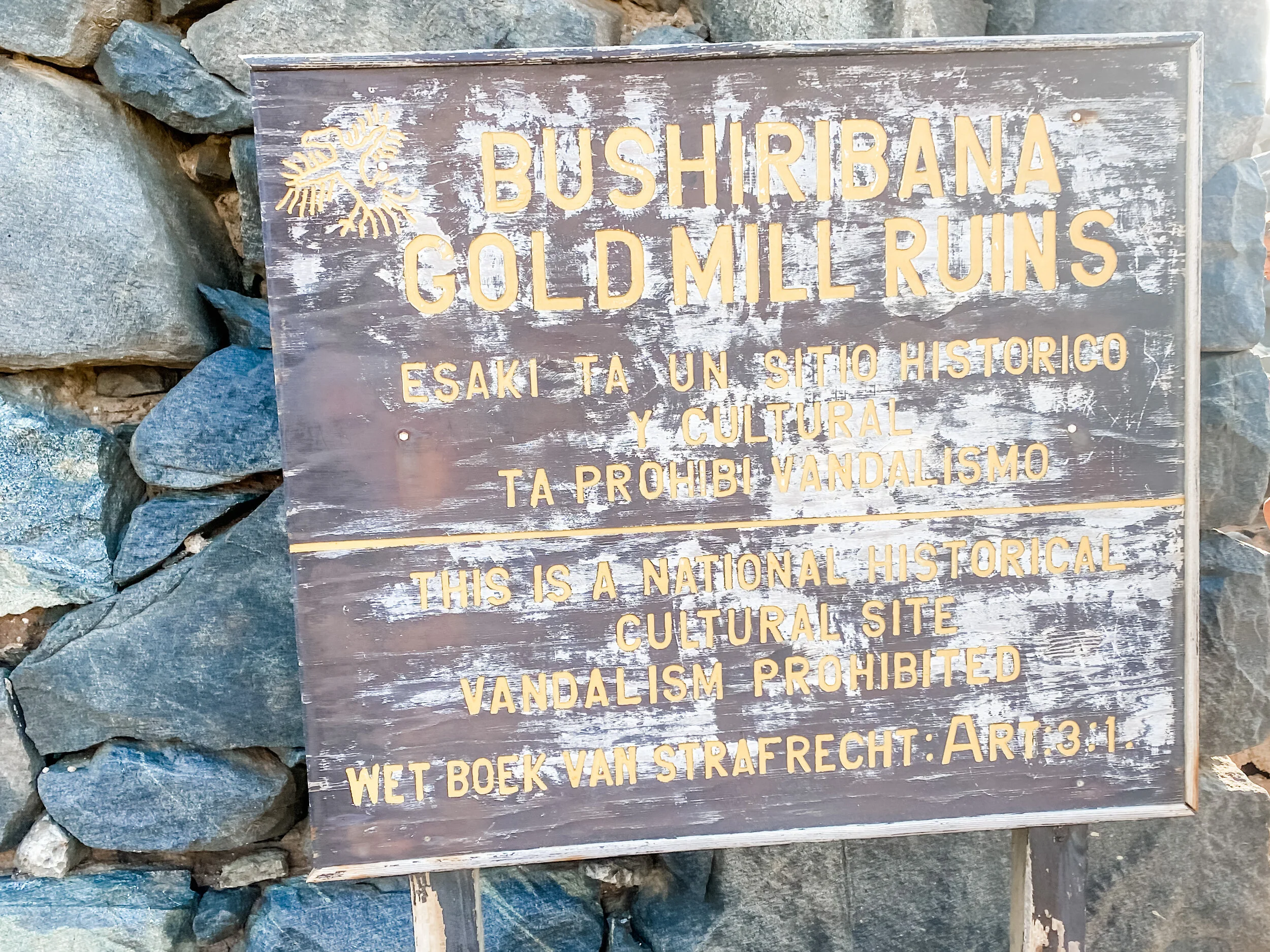Traveling To Aruba? These 5 Fun Know-Before-You-Go Facts Might Surprise You
You probably know Aruba as an idyllic tropical vacation destination. But it turns out not all tropical paradises are created equal. Here are 5 facts about Aruba that make it a unique Caribbean favorite.
If you’re looking for the perfect Caribbean beach vacation spot, chances are Aruba is sure to make your list. The island has been attracting visitors for decades thanks to its beautiful weather and gorgeous beaches.
Couples and family vacationers alike enjoy all that the island has to offer when traveling to Aruba. The island is easily accessible through direct flights from many different U.S. cities. There are some great things to do in Aruba. Visitors can choose from a wide-range of hotel options or AirBnB rentals. And restaurants in Aruba are varied and fun to try out.
Exploring is safe on this “one happy island” as well. Aruba consistently ranks as having one of the lowest crime rates in the Caribbean. No need to stay confined to just your hotel or resort area here. Venturing around the the island is a safe, fun and easy thing to do.
But how well do you know the plot of land that’s the “A” in the ABC Islands? Because it turns out there are a few things about this tropical vacation destination that many people don’t know. Here are 5 things that just might surprise you.
#1 The island of Aruba is likely smaller than you might think.
Aruba may be one of the more well-known places to go for an island vacation. It does play host to around 1 million visitors a year after all.
But this Caribbean locale? It packs a big punch in a small package.
That’s because the island is only about 20 miles long and 5 miles wide at its widest point.
And there are some sections of the island that are slightly narrower than 5 miles or shorter than 20. So it only encompasses a total of just 69 and a half square miles. That’s roughly the size of Washington, DC or about 1/4 the size of New York City.
So, getting around Aruba is easy, even when you first fly in. The airport is only about 15 minutes from where most hotels are located.
Likewise, most things to do are within a short driving distance. No long commutes to restaurants or other places to explore.
So, what can you find when traveling to Aruba? These 6 distinct areas for starters:
Oranjestad
The capital of Aruba holds museums, a plethora of restaurants, and a wide variety of shops. You’ll also find government buildings and the oldest building in the country, Fort Zoutman. The structure was built in 1798 with the goal of protecting the city from pirates. Visitors are welcome to tour the building and visit the museum it now houses.
San Nicolas City
An area known for its natural beauty and street art, San Nicolas City is also the location of 3 museums. And it’s where you can find Baby Beach, a spot for enjoying the Aruban shore away from the hotel district.
Noord
Noord appropriately encompasses the northern part of the island, as the name literally means “north” in Dutch. It’s also the center of tourism on Aruba and the location of most of the hotels on the island. It includes Palm Beach, popular snorkeling spots, and windsurfing and kite-boarding areas.
Santa Cruz
This largely residential section also houses local restaurants, grocery stores, and shops. And it’s the place where you’ll find (spoiler alert) Arikok National Park. (More on that gem of Aruba as you read on!)
Paradera
This region is in the central northeastern part of Aruba. It’s home to the Roman Catholic Church as well as the Hooiberg Mountain. You won’t find hotels here but there are vacation rentals and some unique local restaurants.
Savaneta
Known as the village by the sea, this Aruban town is popular among local fisherman. It’s also where several small, boutique resorts and bed and breakfasts are located. Guests in those resorts, locals, and fishermen alike enjoy the mangrove lined beaches that Savaneta has to offer.
#2 Traveling to Aruba means going to a desert climate, served with a side of wind.
With only about 15 inches of rainfall per year, Aruba gets the least amount of rain of any Caribbean island. Even in the rainiest months - October, November, December, and January - visitors are likely to have sunny days.
In fact, many in the tourist industry site this as one of the biggest draws to the island. And a contributing factor as to why the island became popular. Chances of a rained-out vacation are (almost) nonexistent.
That desert climate means you won’t see any large land mammals while you’re traveling in Aruba. But you'll find lots of small lizards and geckoes, as well as many species of birds.
And you’ll find some really unique plant life.
The Divi Divi (Watapana) tree is one of the most well-know Aruban trees. It acts as a natural compass, always pointing in a southwestern direction. Fofoti trees are also abundant in Aruba and are commonly mistaken for Divi Divi trees.
Visitors are also sure to spot lots of cacti. They thrive in the arid climate of Aruba, as does the aloe plant. In fact, aloe is so abundant and easily grown on the island that there’s an aloe factory. Aruba aloe products are sold in the factory as well as throughout the island of Aruba.
Worried that climate that helps desert fauna survive will make traveling to Aruba uncomfortable?
No chance of that, thanks to the near constant wind that blows over the land.
In fact, there’s almost always a strong breeze in the air. So it feels like year-round summer with highs in the upper 80s to lower 90s. But the breeze makes the temperature comfortable… even though you can expect to be a bit wind blown.
#3 If you’re traveling to Aruba, you just happen to be going to one of the most ecologically friendly islands in the Caribbean.
It seems that the citizens of Aruba are committed to keeping their small country preserved for generations to come. And as a tourist, you can feel good knowing you’re visiting a country that’s focusing on environmental friendliness. That’s because Aruba is a big leader in sustainability.
The country’s efforts can be found in a variety of initiatives the people and the government have taken on. Most notably, Aruba is focusing on these four ways to help protect the earth.
A Harmful Chemical was Banned in Sunscreen.
The country banned sunscreen containing oxybenzone, a chemical known to harm reef systems. Only reef-safe sunscreen is allowed on the island.
Alternative Energy SOurces Are Being Developed.
Aruba is focusing on renewable energy. Although the country wasn’t able to meet its goal of 100% renewable energy by 2020, it has made strides. Solar and wind energy is being more widely used than ever before. The country receives nearly 20% of its energy from clean power provided by these methods and others. And a large wind farm was established recently as was a massive solar park at the Reina Beatrix International Airport.
Changes in food sourcing and fishing regulations are being made to help the island be more sustainable.
Agricultural efforts and fishing practices are being revamped. Agriculturally, Aruba is focusing on locally grown produce so residents are able to import less food. That means fruit trees are being planted and locals are being encouraged to grow food when possible. And farmers markets are popping up, giving growers a chance to sell their produce and other products. Likewise, more sustainable fishing practices are being encouraged to better support marine life.
Aruba’s Parliament banned single-use plastic items.
Plastic cups and plates, single-use plastic bags, straws and stirrers, plastic utensils, and plastic to-go containers are no longer used on the island. So save a little space in your luggage to bring home some super cute reusable bags. Everything you buy and each take-out order you place will come in one.
#4 Most Arubans learn to speak 4 languages.
Thinking of learning a bit of the language the locals speak before you travel to Aruba?
Chances are you won’t need to because they very likely, literally, speak your language. In fact, to be on par with the locals being bilingual or trilingual won’t quite cut it. Most citizens in Aruba are quadrilingual, or able to speak four languages, from a very young age.
At home, children in Aruba speak Papiamento, the country’s native tongue, which is actually the combination of 5 languages. Influences from Spanish, English, French, Portuguese, and Dutch are all a part of it. It began as a way for people fluent in different languages to communicate. It evolved over the years into a language with its own unique sayings and mannerisms.
And while families often speak Papiamento, in school Aruban children first use Dutch. They also quickly learn English and Spanish.
Maybe the linguistic skills of Arubans shouldn’t be all that surprising though. Because the island has a vastly diverse population.
While some people have indigenous ancestry, many have roots in other countries. People from over 90 nationalities call the island home.
A high standard of living is usually credited for attracting people from all over who want to live here.
The great weather is also considered a large contributing factor.
And a close proximity to South America has brought immigrants from countries like Colombia, Venezuela, and Peru to the island. Likewise, others from nearby Caribbean islands such as Haiti, the Dominican Republic, and Curacao have settled in Aruba.
In terms of European immigrants, the Netherlands is the country from which the largest number of people hail. While still others come from countries farther away, such as China, the Philippines, and various African nations.
All of those who come bring their own traditions and languages, giving Aruba the multinational heritage it enjoys today.
#5 Almost 1/5 of Aruba’s land is designated a National Park.
Part of what has allowed Aruba to remain undeveloped is the establishment of a National Paek.
The area which is known as Arikok National Park, is located on the north side of the island. And this section of the island seems to be a world away from the hustle of the hotel section of Aruba.
The park encompasses about 7907 acres on the island, or about 20% of the island. Visitors can enter the park for a small fee. Travel and Leisure’s Aruba travel guide names exploring the park as a top thing to do during your island vacation.
And our family agrees that it’s not to be missed. It was one of the most fun things we did while traveling to Aruba. Some of the most interesting sites to see include:
several caves where ancient pictographs have been found
The pictographs depict what life may have been like for the earliest people who lived in Aruba. Specifically, some historians think the drawings show why the Indians came to the island at all. They may show that they were attacked by another tribe and forced to flee to the area from Venezuela. Other drawings in the caves in the park are thought to be from early European settlers, who came to the island later.
the Natural Pool
This area is protected from the otherwise rough seas by rock formations. Swimming here is safe as long as the waves aren’t too strong on the day of your visit.
Boca Prins
You’ll find great sunset views overlooking a jagged coastline. It’s also where turtles come to nest.
Jamanota Hilltop and Arikok Hilltop
These two spots are accessible by hiking or riding in a 4 by 4 vehicle and offer great views of the entire island. Jamanota Hilltop is the highest of the two (and actually the highest point in the island.) Arikok Hilltop offers spectacular views as well, even though it is a slightly shorter peak.
Cunucu Arikok
This patch of land where you can find remnants of an old farm is another interesting place to see in the park. Plan to explore the ruins as they’re open to visitors.
Dos Playa
Although swimming isn’t recommended here because of large waves, you might catch some surfers who brave the waters. And this beautiful beach deserves a visit anyway for its secluded location and 2 coves to explore.












